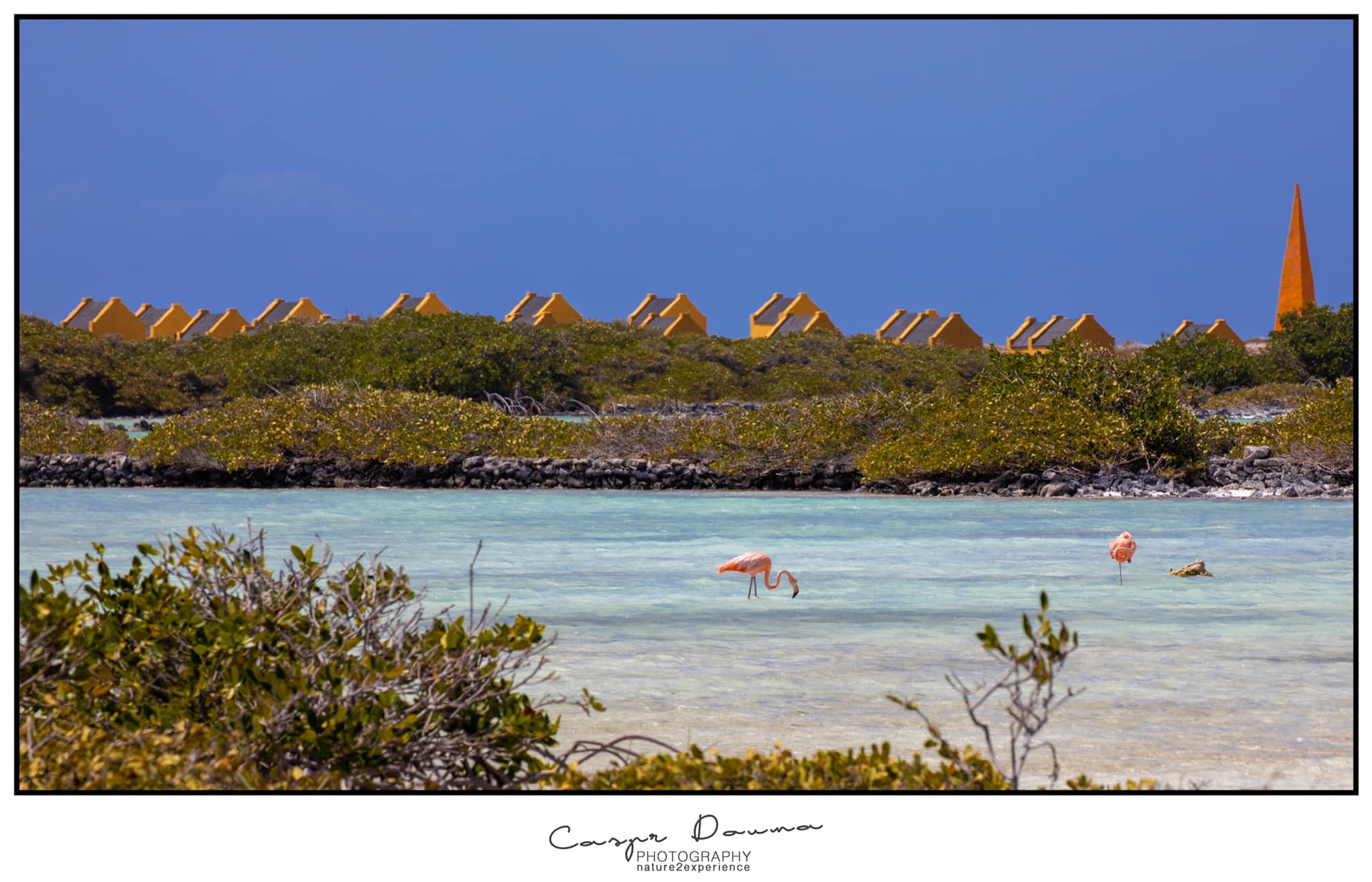Bonaire’s slave huts symbolize a painful historical era, while nearby flamingos offer natural beauty. These contrasts recall resilience after injustice, with the cottages as silent witnesses to slavery and flamingos bringing life and color.
Flamingos live next to slave huts on Bonaire.
These small, whitewashed huts, no larger than two meters by two meters, served as shelters for slaves who worked on the island’s salt pans. The harsh and inhumane living conditions of the slaves are reflected in the simplicity and smallness of these structures. They are a silent witness to the hard life the slaves led. Working under the blazing sun to harvest the precious salt that was so important to European markets. A stone’s throw from these historic sites is a natural wonder that contrasts with the bleak history: Bonaire’s slave huts flamingos. These graceful birds, known for their vibrant pink color, thrive in the island’s salt flats and surrounding waters. These areas provide the perfect habitat for flamingos, rich in the algae and small crustaceans that make up their diet and give their feathers their characteristic pink hue.

Casper Douma Photography
“Bon dia tur hende i bon bini na dushi Boneiru!”
My name is Casper Douma and I am a photographer. Since 2014 I’ve been living on this beautiful island, surrounded by a fringing reef. At first glance, you may see mostly cacti and drought, but Bonaire is a little gem if you get to know it better. I would like to take you on one of my photography tours to show you all the special places of Bonaire. In small groups of maximum 4 people I give you a unique look at the beauty of Bonaire. Became curious? Take a look at my website! I wish you a lot of fun on beautiful Bonaire.